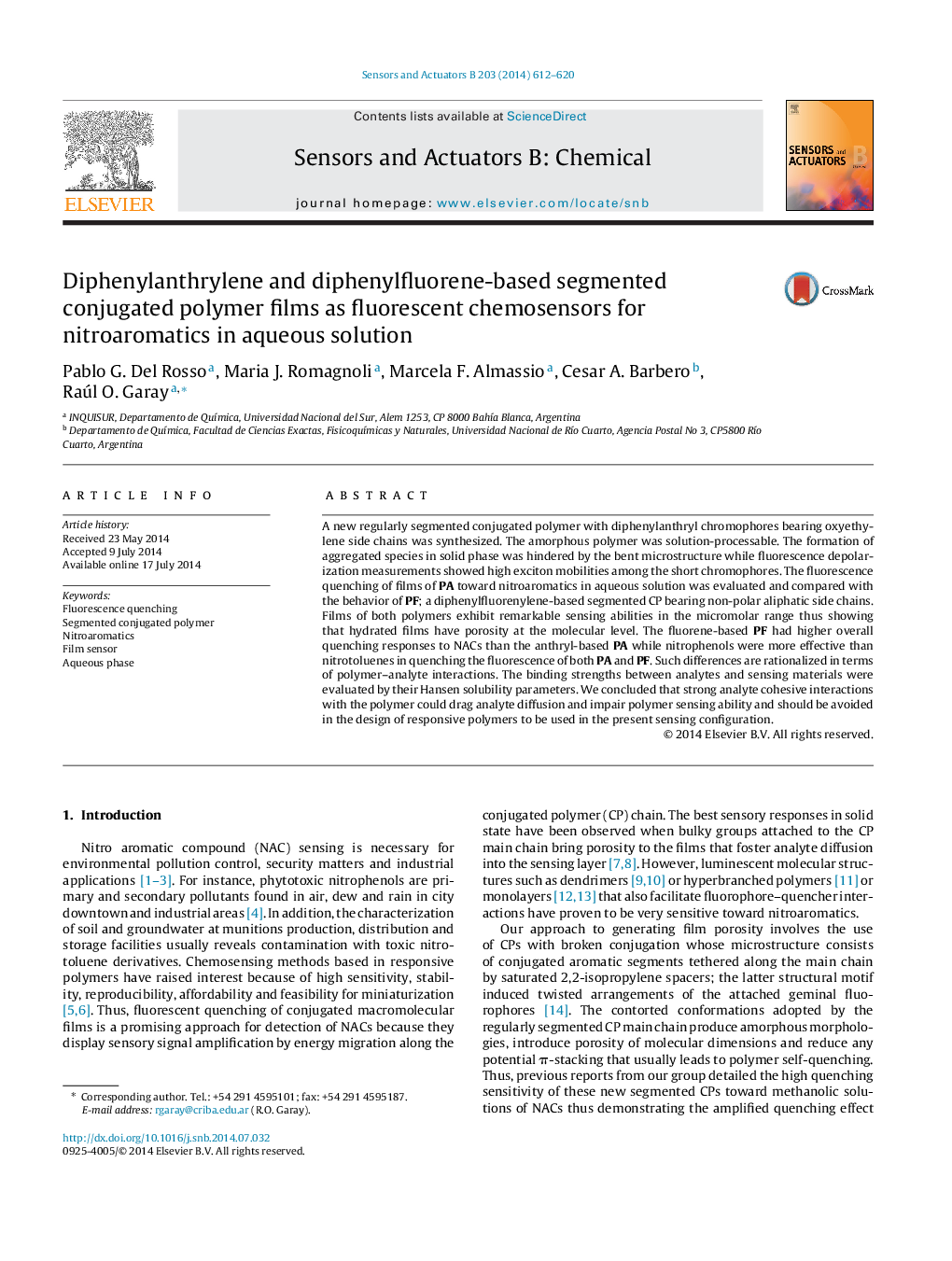| Article ID | Journal | Published Year | Pages | File Type |
|---|---|---|---|---|
| 7146768 | Sensors and Actuators B: Chemical | 2014 | 9 Pages |
Abstract
A new regularly segmented conjugated polymer with diphenylanthryl chromophores bearing oxyethylene side chains was synthesized. The amorphous polymer was solution-processable. The formation of aggregated species in solid phase was hindered by the bent microstructure while fluorescence depolarization measurements showed high exciton mobilities among the short chromophores. The fluorescence quenching of films of PA toward nitroaromatics in aqueous solution was evaluated and compared with the behavior of PF; a diphenylfluorenylene-based segmented CP bearing non-polar aliphatic side chains. Films of both polymers exhibit remarkable sensing abilities in the micromolar range thus showing that hydrated films have porosity at the molecular level. The fluorene-based PF had higher overall quenching responses to NACs than the anthryl-based PA while nitrophenols were more effective than nitrotoluenes in quenching the fluorescence of both PA and PF. Such differences are rationalized in terms of polymer-analyte interactions. The binding strengths between analytes and sensing materials were evaluated by their Hansen solubility parameters. We concluded that strong analyte cohesive interactions with the polymer could drag analyte diffusion and impair polymer sensing ability and should be avoided in the design of responsive polymers to be used in the present sensing configuration.
Related Topics
Physical Sciences and Engineering
Chemistry
Analytical Chemistry
Authors
Pablo G. Del Rosso, Maria J. Romagnoli, Marcela F. Almassio, Cesar A. Barbero, Raúl O. Garay,
